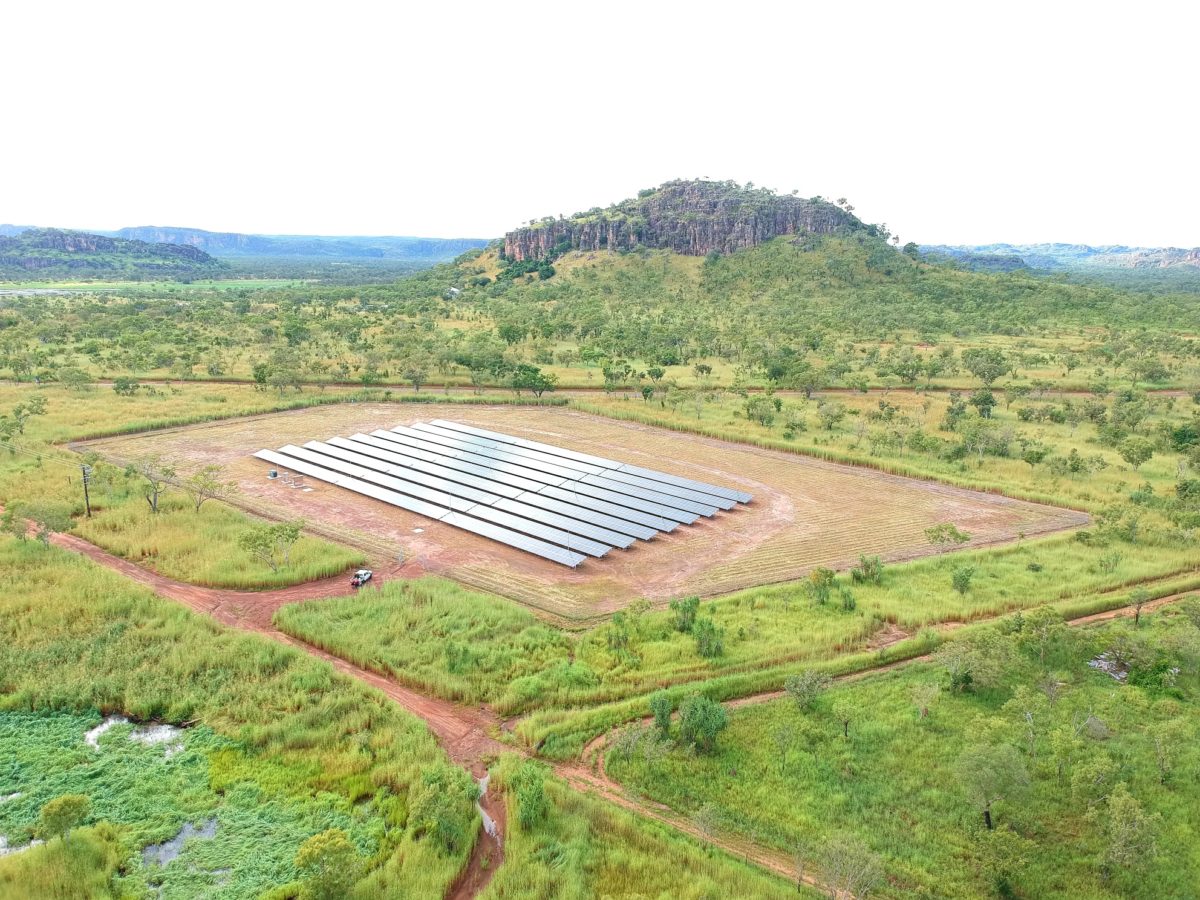The Northern Territory Labor government has announced the completion of SETuP, which is designed to deliver clean, safe and reliable power to far-flung locations and reduce reliance on costly diesel fuel for electricity generation. The program has deployed 10 MW of PV capacity at 25 sites across the territory. The solar arrays were built in isolated locations with existing power stations, resulting in remote hybrid power generation.
The primary goal of the program is to reduce diesel use by 15% in targeted communities, which adds up to 94 million litres of diesel savings over the 25-year life of the program.
“SETuP will help to support cleaner power for Territorians in remote communities by reducing reliance on costly diesel, and also air pollution,” said Northern Territory Minister for Renewables, Energy and Essential Services, Dale Wakefield. “The program has won engineering excellence awards and due to the hard work and innovation by staff, the territory is now seen as a leader in remote hybrid power generation. I congratulate and thank all involved.”
Launched in 2014, SETuP is a $59 million program co-funded by the Northern Territory government and the Australian Renewable Energy Agency (ARENA). The program saw 3.325 MW of solar PV built in 10 remote Aboriginal communities by local construction contractor Territoria Civil in 2017. The second tranche deployed a further 5.6 MW of solar PV in 17 communities across the territory, from Finke near the South Australian border to the Tiwi Islands.
The program included a unique project at Nauiyu (Daly River) that combined a 1 MW solar array with a 2 MWh battery system, allowing for 100% use of solar energy during the day, with diesel engines operating at night.
The program was delivered by Power and Water Corp. SETuP has provided a number of outcomes on top of fuel savings for the government-owned provider of electricity, water and sewerage services, such as improving the understanding of solar power in the 25 communities.
“We successfully increased the understanding of how solar power creates efficiencies, improves air quality, reduces the number of heavy vehicles traveling in and out of a community and reduces greenhouse gas emissions through proactive communication and engagement,” Power and Water Chief Executive Michael Thomson said, noting the program has been received positively and community leaders have been actively engaged to contribute to its successful delivery.
The $31.5 million funding agreement with ARENA will go through to April 2022.
“This is a fantastic achievement for all involved in completing this ambitious project to deliver the largest rollout of renewable energy to remote, off grid communities in the Northern Territory,” said ARENA CEO Darren Miller. “Now integrated, these communities can increase their uptake of renewables and have the option to add batteries to store their solar energy in the future.”
The news comes off the back of the federal government’s announcement of a $50.4 million fund to support off-grid and fringe-of-grid feasibility studies for up to 50 microgrid projects. It is also backing initiatives from big utilities to deploy standalone systems as a cost-effective alternative to maintaining and replacing ageing and skinny grid infrastructure.
The SETuP program is part of the Northern Territory government’s plans to take its three grids to an installed total of 450 MW of renewables by 2030. Most of that will be solar PV, as envisaged in the Roadmap to Renewables Report in 2017, which recommended a target of 50% renewable energy by 2030 for households. Business electricity costs and the SETuP program will support the goal.
With the roadmap in sight, the government has also invested $5 million in its Rooftop Solar in Schools program, which will see PV systems installed at up to 25 schools across the territory. It has also allocated $8.3 million for the 5 MW Alice Springs Battery Energy Storage System, $4.5 million for its smart energy grants scheme, and $2 million under an energy efficiency and sustainability scheme, with grants available to local government councils for a range of projects, including energy storage and renewable energy systems.
In terms of large-scale solar, last October the government waved through the territory’s largest PV project, the 25 MW Katherine Solar Farm. It was later acquired by Italian oil group Eni. The government has also approved two 10 MW solar farms at Batchelor and Manton Dam, which are set to boost the territory’s share of renewable energy from 3% at present to 10%.
This content is protected by copyright and may not be reused. If you want to cooperate with us and would like to reuse some of our content, please contact: editors@pv-magazine.com.









2 comments
By submitting this form you agree to pv magazine using your data for the purposes of publishing your comment.
Your personal data will only be disclosed or otherwise transmitted to third parties for the purposes of spam filtering or if this is necessary for technical maintenance of the website. Any other transfer to third parties will not take place unless this is justified on the basis of applicable data protection regulations or if pv magazine is legally obliged to do so.
You may revoke this consent at any time with effect for the future, in which case your personal data will be deleted immediately. Otherwise, your data will be deleted if pv magazine has processed your request or the purpose of data storage is fulfilled.
Further information on data privacy can be found in our Data Protection Policy.